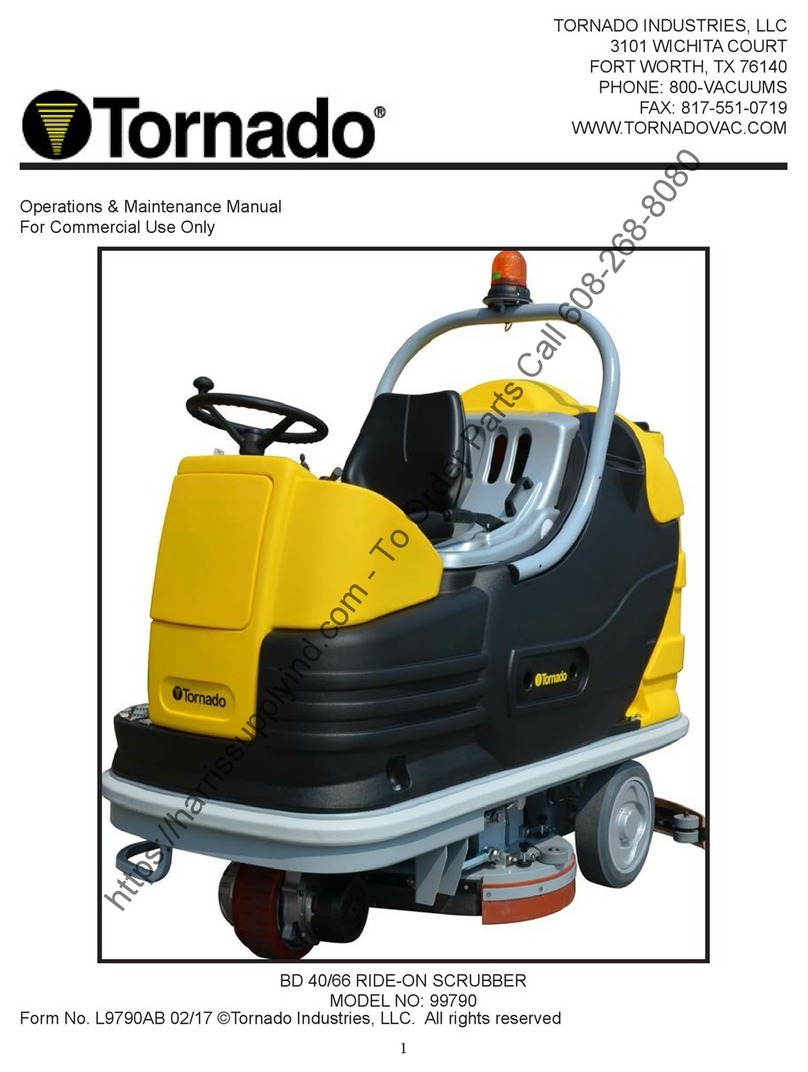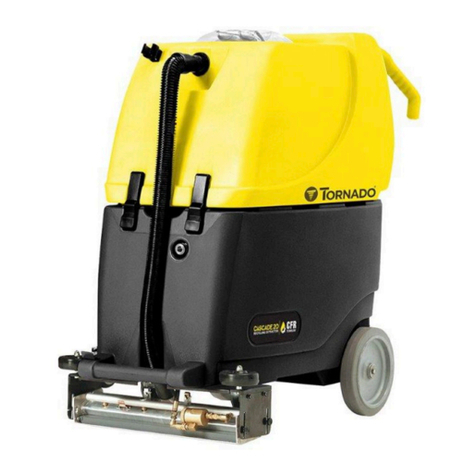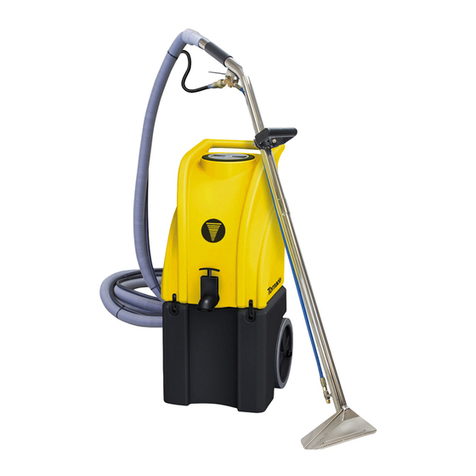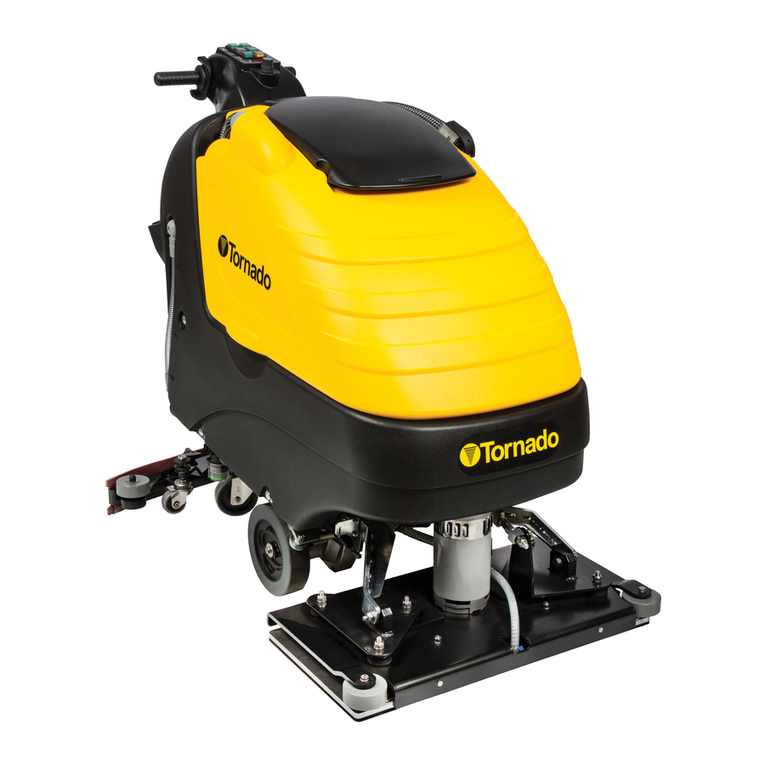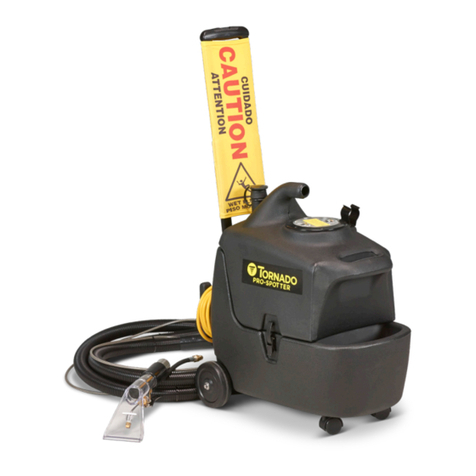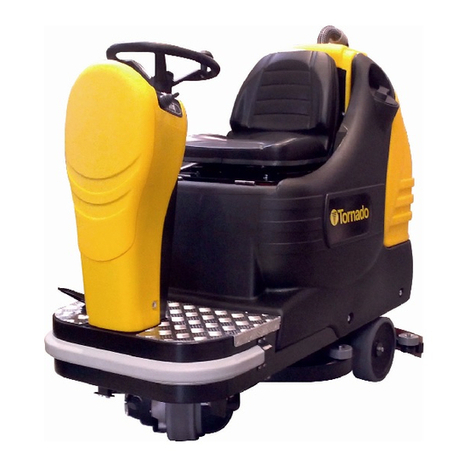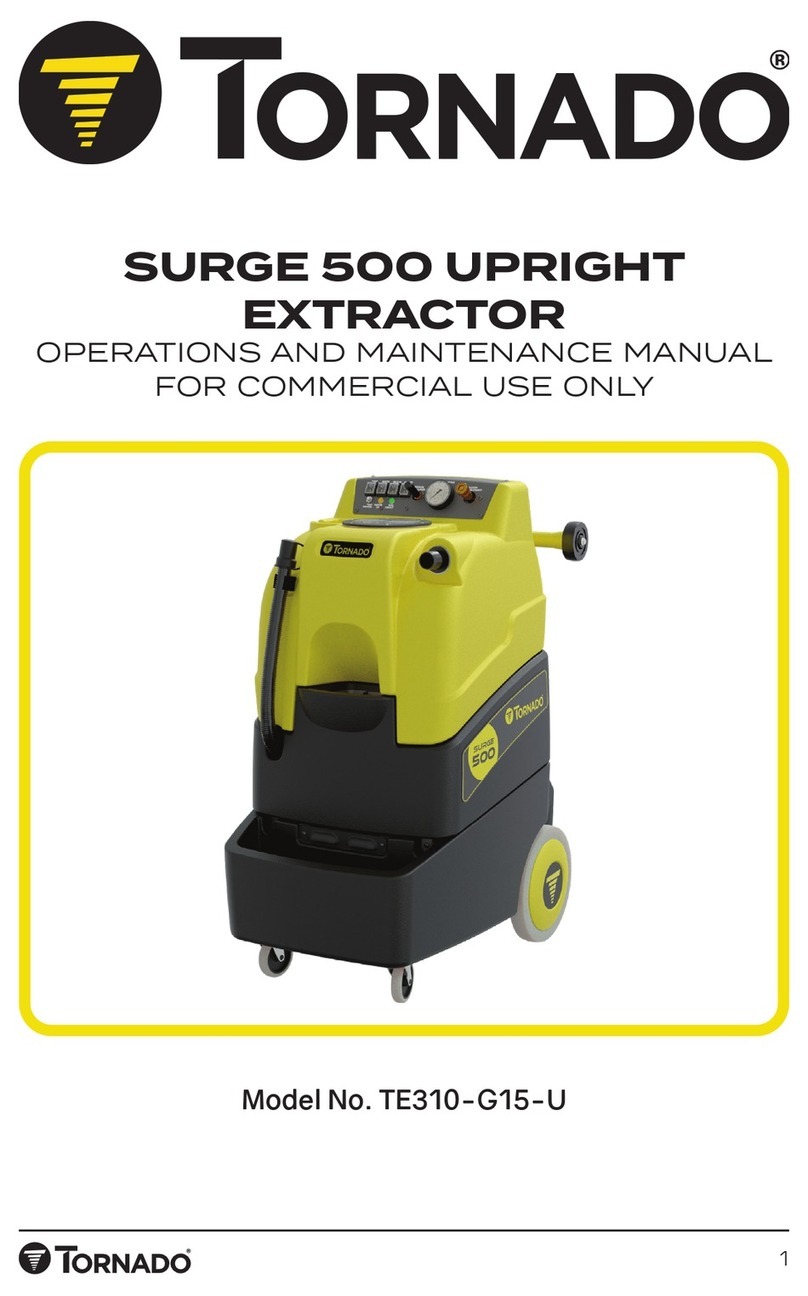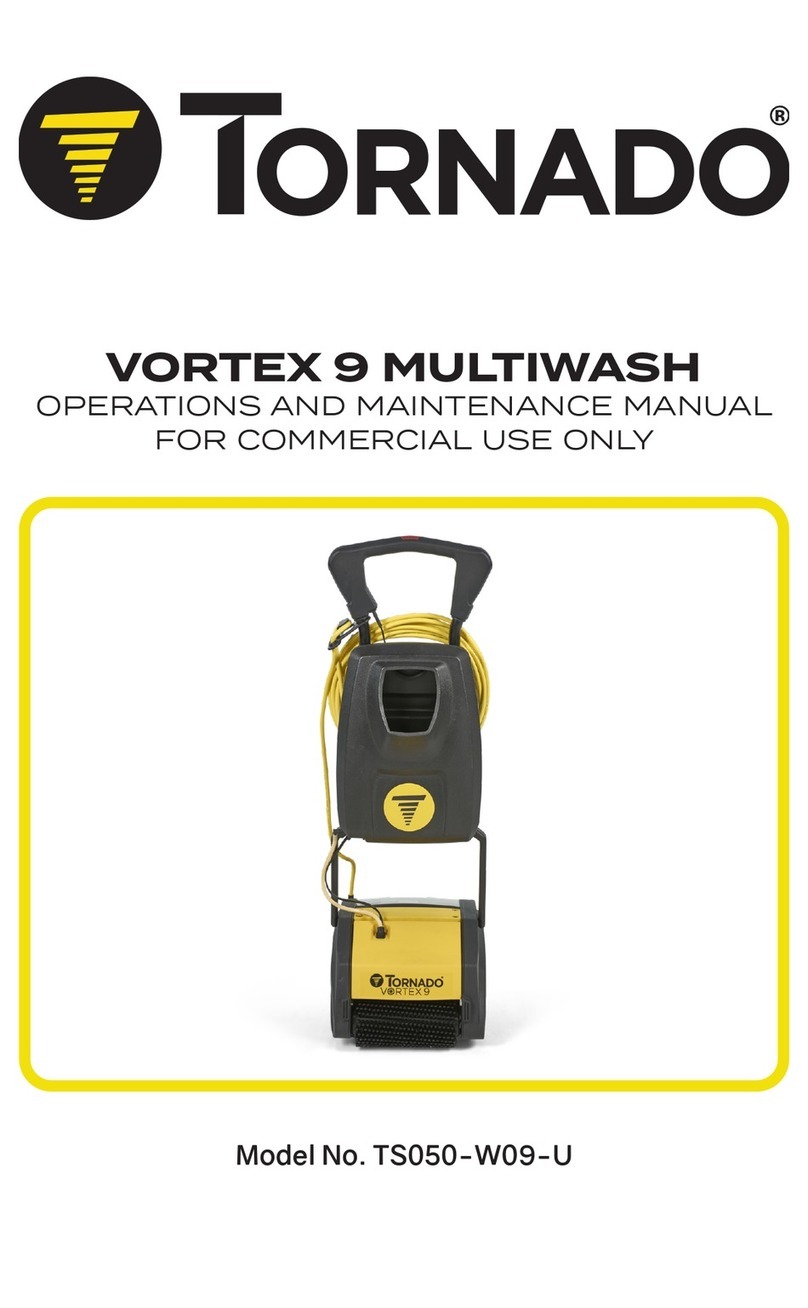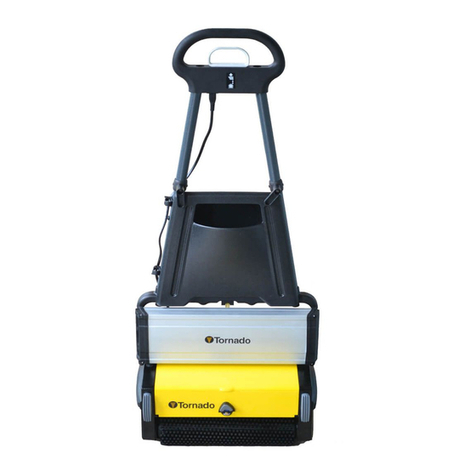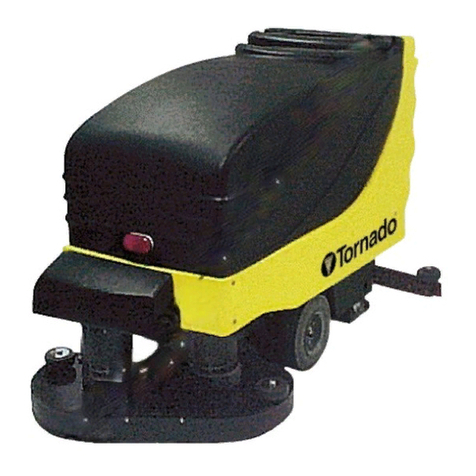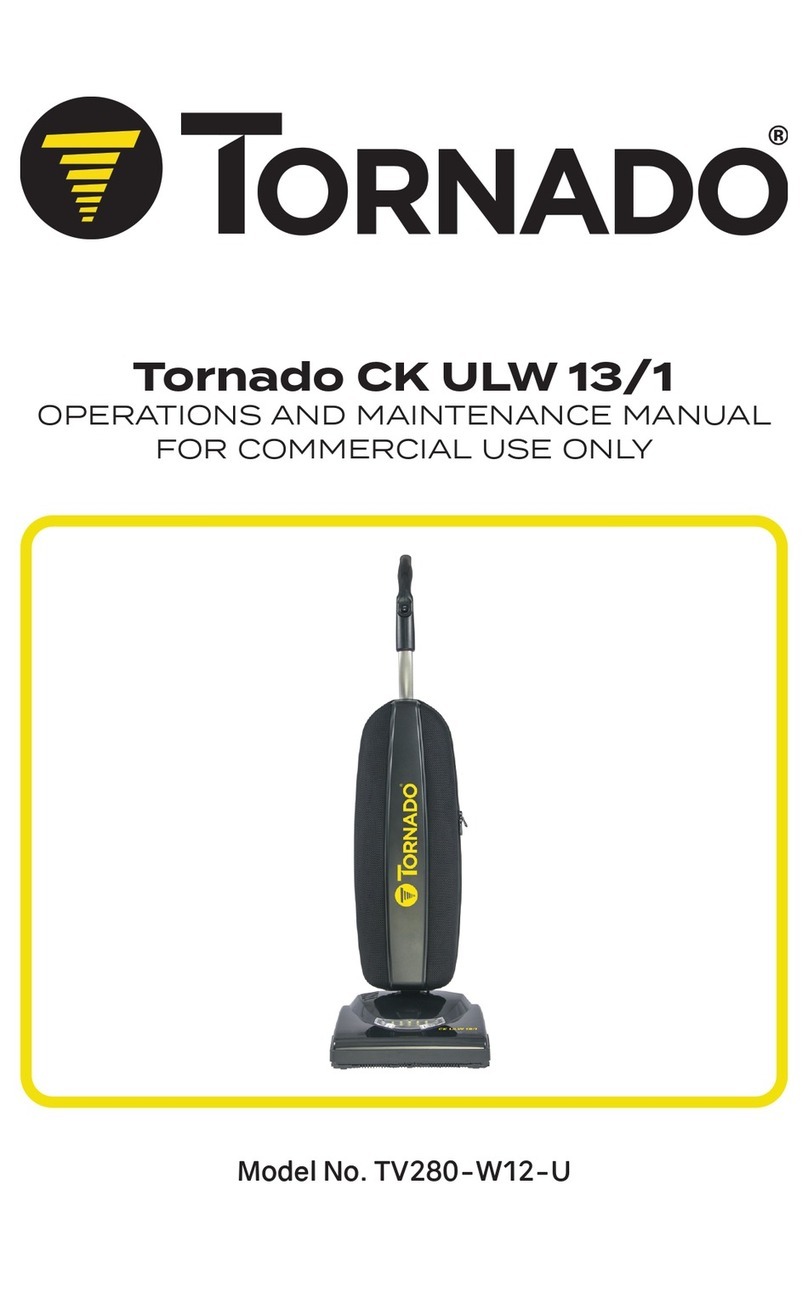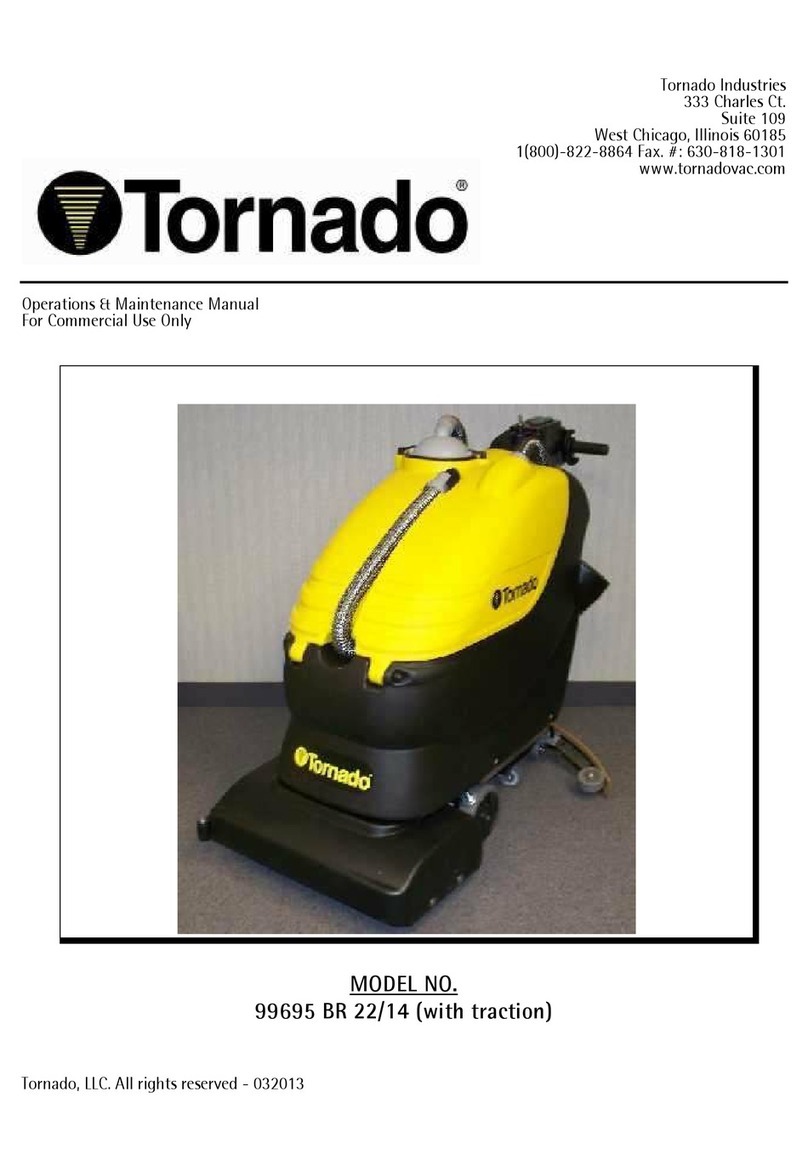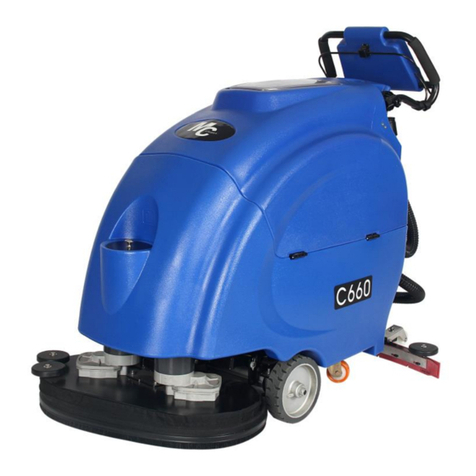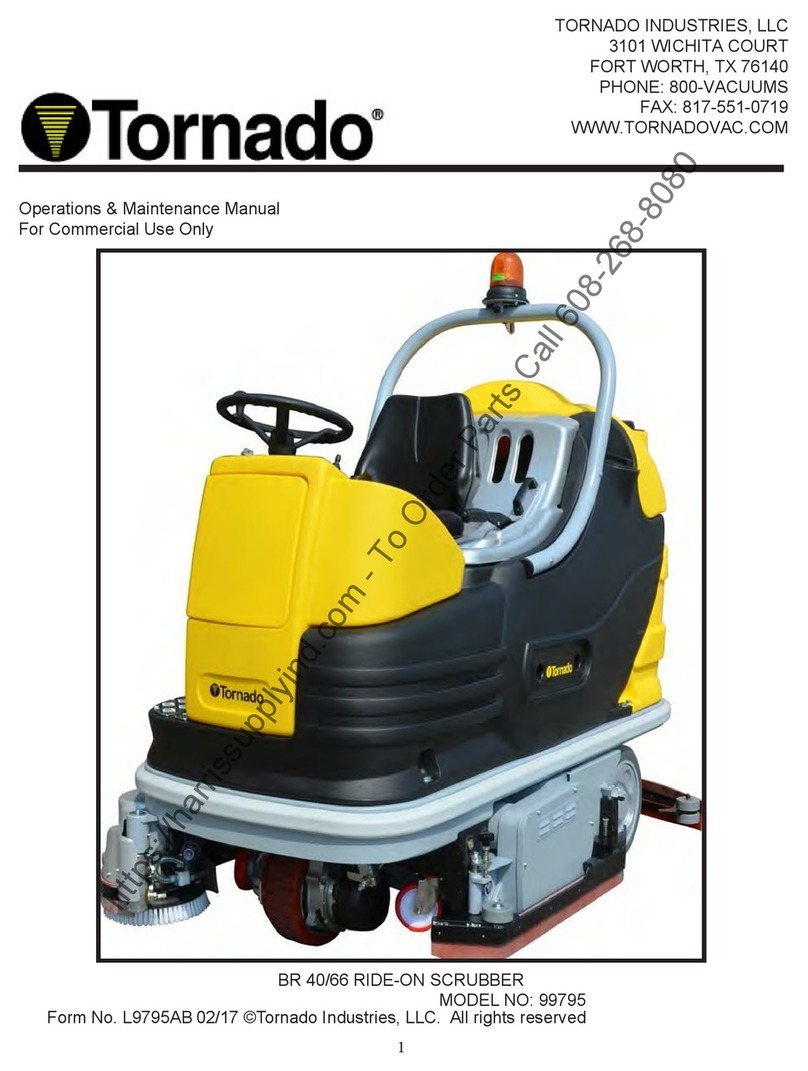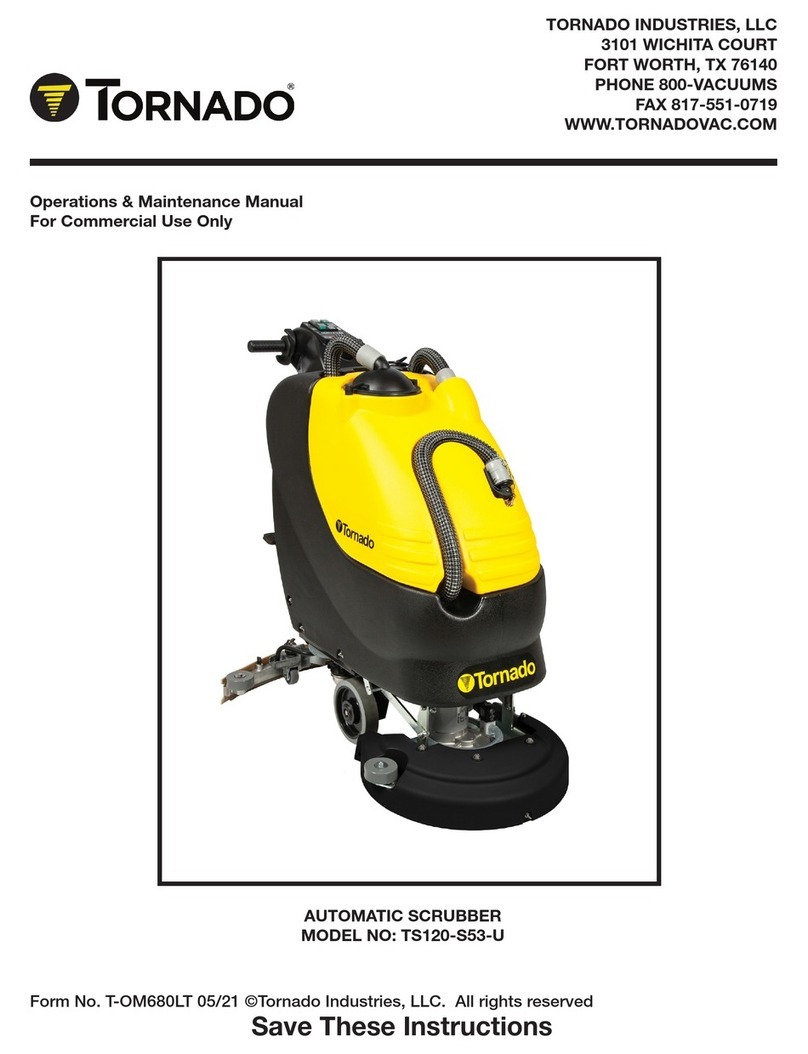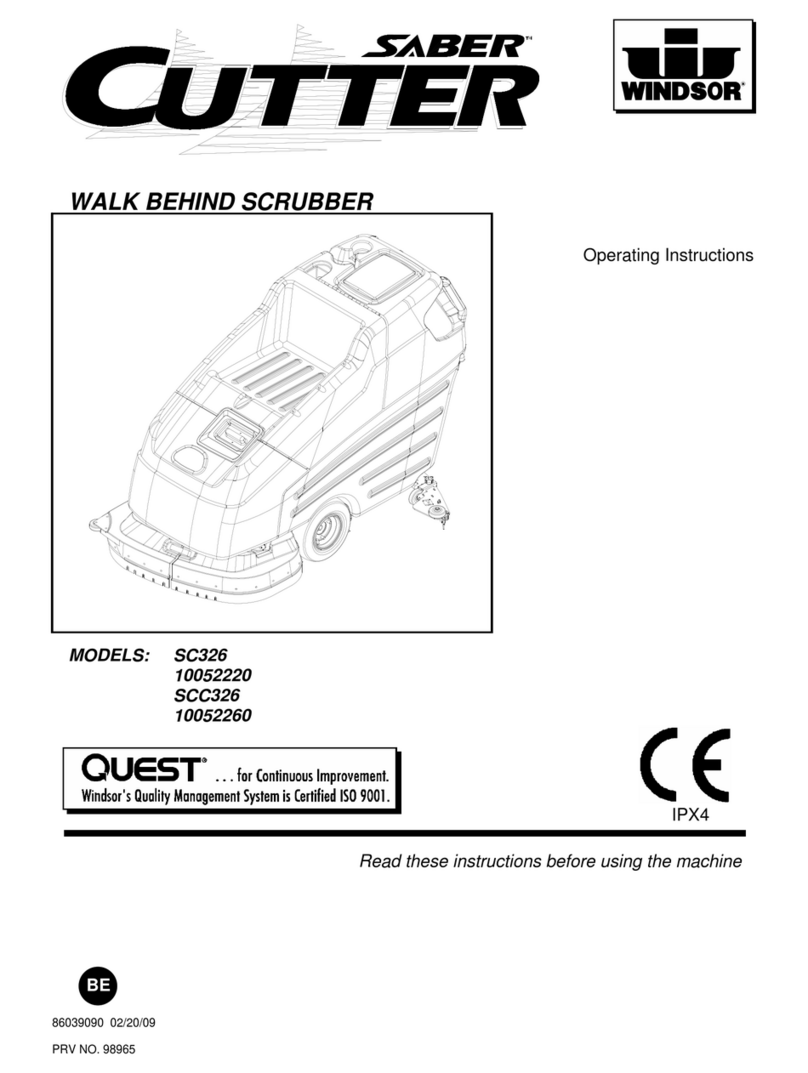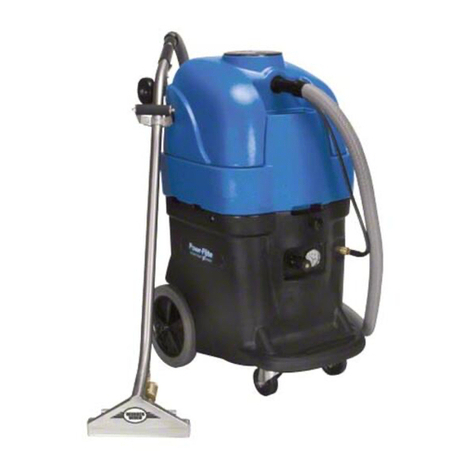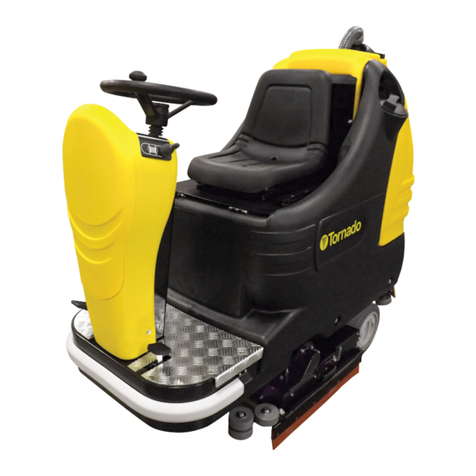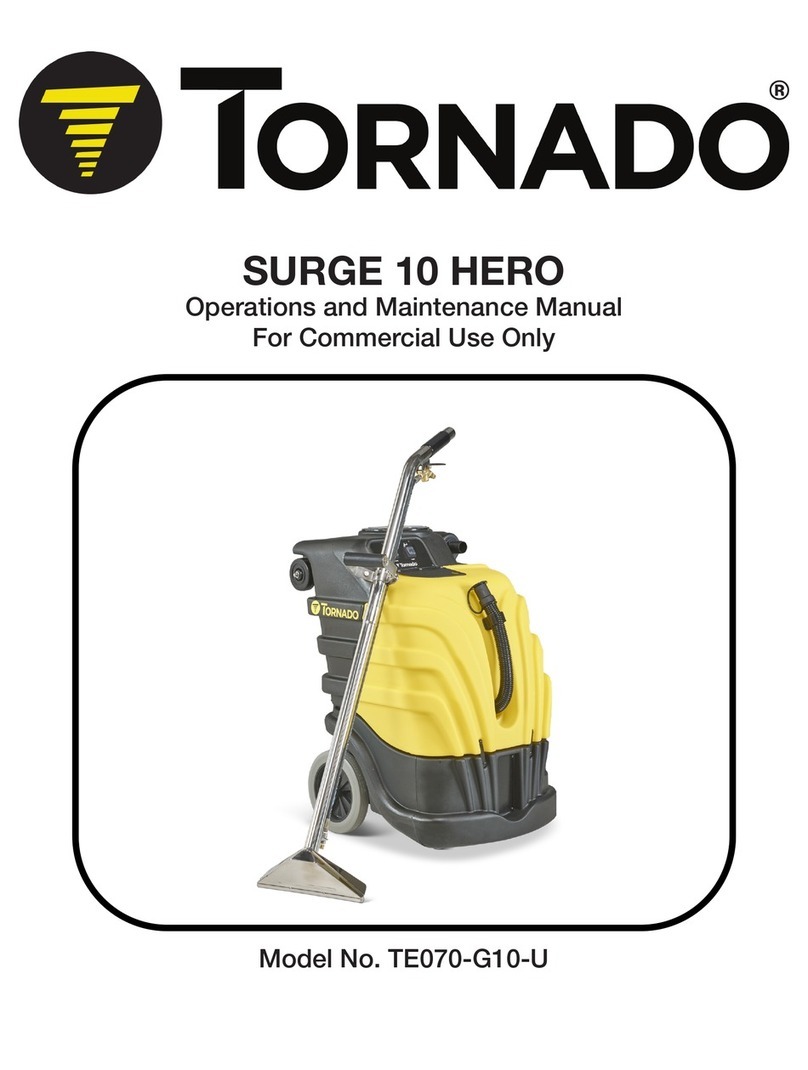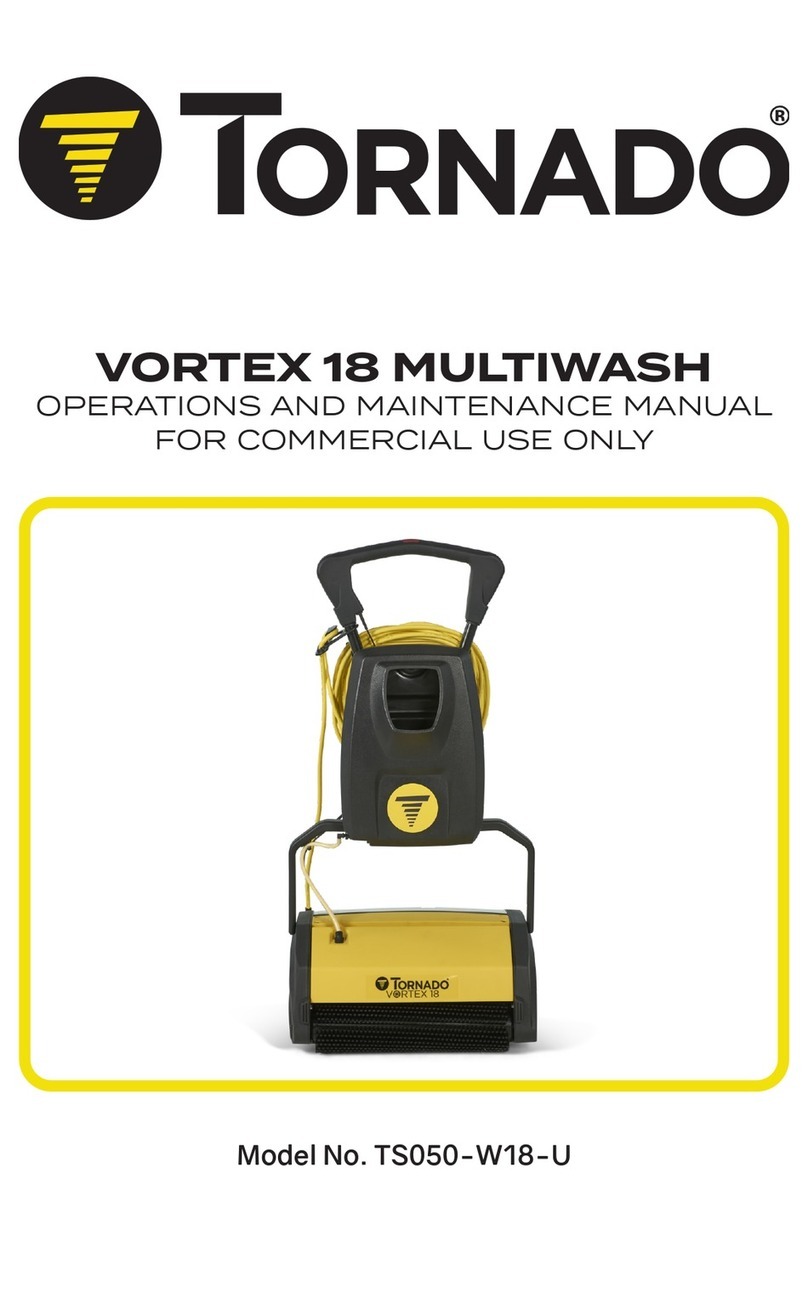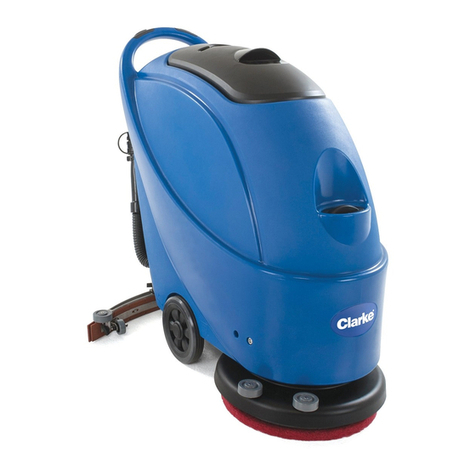
9
INTRODUCTORY COMMENT
Thank you for choosing our machine. This oor
cleaning machine is used for the industrial and
commercial cleaning and is able to clean any
type of oor. During its movement, the combined
action of the brushes and the detergent solution
removes the dirt which is recovered through
the rear suction assembly, giving a perfectly
dry surface. The machine must be used only
for such purpose. It gives the best performance
if it is used correctly and maintained in perfect
efciency. We therefore ask you to read this
instruction booklet carefully whenever difculties
arise in the course of the machine’s use. In
case of need, we ask you to contact our service
department for all advice and servicing as may
prove necessary.
GENERAL RULES OF SECURITY
The rules below have to be followed carefully in
order to avoid damages to the operator and to
the machine.
- Read the labels carefully on the machine. Do
not cover them for any reason and replace them
immediately if damaged.
- The machine must be used exclusively by
authorized staff that has been instructed for its
use.
- During the working of the machine, pay at-
tention to other people and especially to the
children.
- In case of danger release the accelerator pedal
so to activate the parking brake.
- Leaving the machine in parking position, take
off the key from the instrument board.
- Do not mix different detergents, avoiding harm-
ful odors.
- Storage temperature: between -25°C and
+55°C.
- Perfect operating temperature: between 0°C
and 40°C.
- The humidity should be between 30 and 95%.
- Do not use the machine in explosive atmo-
sphere.
- Do not use the machine as a means of trans-
port.
- Do not use acid solutions in such concentra-
tions that could damage the machine and/or the
persons.
- Do not use the machine on surfaces covered
with inammable liquids or dusts (for example
hydrocarbons, ashes or soot).
- In case of re, use a powder re-extinguisher.
Do not use water.
- Do not strike shelvings or scaffoldings, where
there is danger of falling objects.
- Adapt the working speed to the oor condi-
tions: particularly, slow down before narrow
curves have to be faced.
- Do not use the machine on areas having a
higher gradient than the one stated on the
number plate.
- The machine has to carry out simultaneously
the operations of washing and drying. Differ-
ent operations must be carried out in restricted
areas prohibited to non-authorized personnel.
Signal the areas of moist oors with suitable
signs.
- If the machine does not work properly, check
by conducting simple maintenance procedures.
Otherwise, ask for technical advice an autho-
rized assistance centre.
- Where parts are required, ask for ORIGINAL
spare parts to an authorized dealer.
- Use only ORIGINAL brushes indicated in the
paragraph “RECOMMENDED BRUSHES".
- For any cleaning and/or maintenance
operation take off the power supply from the
machine.
- Do not take off the protections which require
the use of tools to be removed.
- Do not wash the machine with direct water
jets or with high water pressure nor with cor-
rosive material.
- Every 200 working hours have a machine
check through an authorized service depart-
ment.
- In order to avoid scales on the solution tank
lter, do not ll the detergent solution many
hours before the machines’ use.
- Before using the machine, check that all
panels and coverings are in their position as in-
dicated in this use and maintenance catalogue.
- Restore all electrical connections after any
maintenance operation.
- Provide for the scrapping of the material of
normal wear following strictly the respective
rules.
- When, your machine has to stop activity,
provide for the appropriate waste disposal
of its materials, especially oils, batteries and
electronic components, and considering that
the machine itself has, where possible, been
constructed using recyclable materials.
SYMBOLOGY
Symbol denoting the switch for the
water opening and the signal lamp
that the water is open.
Symbol denoting the functioning
of the solution valve adjusting the
ow of the detergent solution.
Indication of the maximum tempera-
ture of the detergent solution. It is
placed near the lling hole of the
solution tank.
Symbol denoting the push button and
the signal lamp of the manual mode.
Symbol denoting the push
button and the signal lamp of the
Automatic mode.
Symbol denoting the push
button and the signal lamp of the
break wash mode.
Symbol denoting the signal lamp of
the starting of the brushes rotation.
Symbol denoting the push button to
visualize on the display the brushes
pressure set.
Symbol denoting the functioning of
the adjustment knob of the brushes
pressure.
Symbol denoting the push button
and the signal lamp up/down of the
squeegee.
Symbol denoting the switch and the
signal lamp of the suction motor.
Symbol denoting the charge level of
the batteries.
Symbol denoting the push button
to visualize the hour meter on the
display.
Symbol denoting the push button and
the signal lamps for the speed selec-
tion.
Symbol denoting the drive selector
forwards/backwards.
Symbol denoting the signal lamp of
the parking brake on.
Symbol denoting the open book.
Indicates that the operator has to
read the manual before the use of the
machine.
Warning symbol.
Read carefully the sections marked
with this symbol, for the security of
both the operator and the machine.
https://harrissupplyind.com-ToOrderPartsCall608-268-8080
